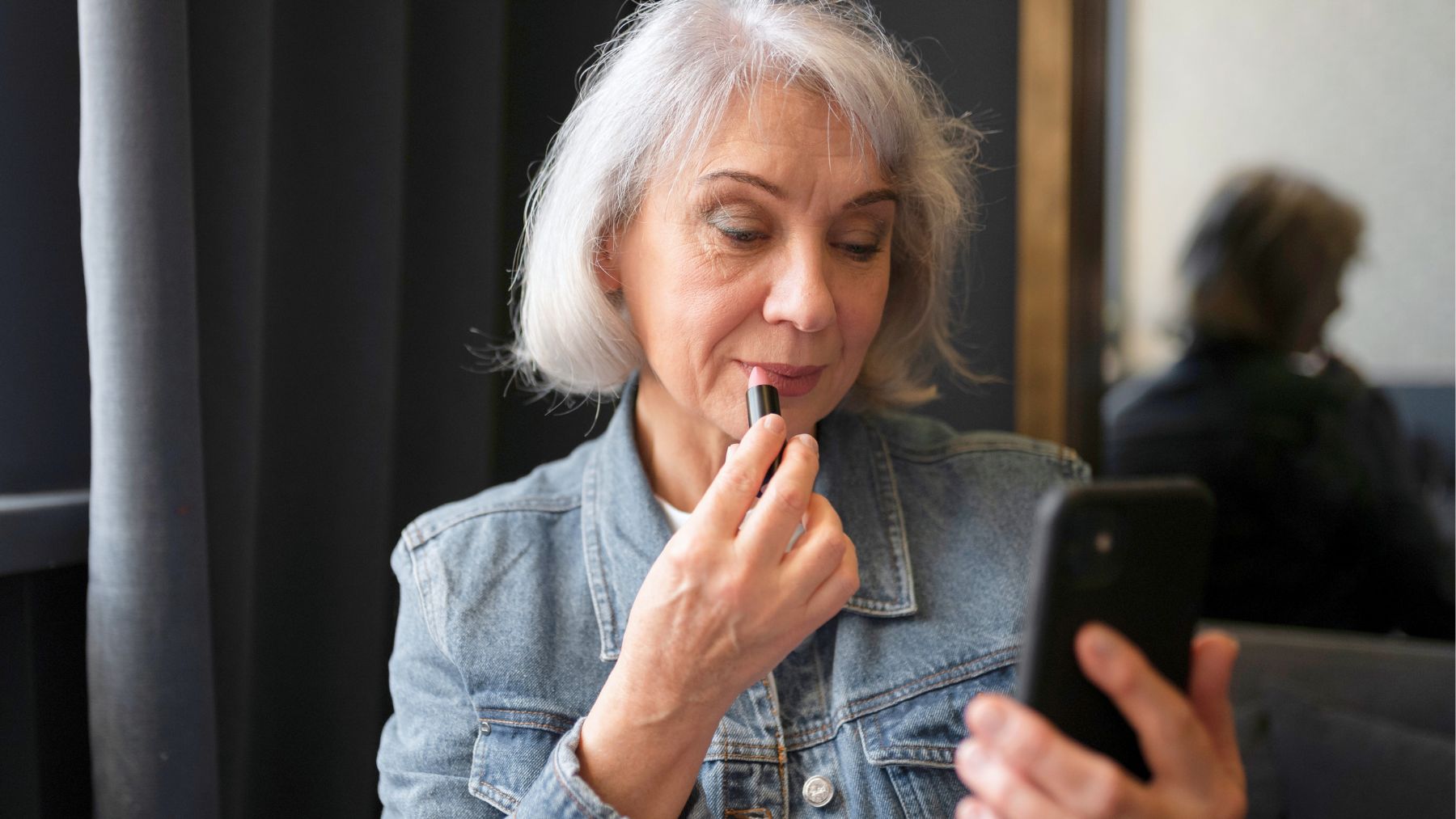If your makeup routine hasn’t changed in a decade, it might be time for an update. Many women over 50 are realizing that old techniques—once flattering in their 30s and 40s—can now accentuate fine lines, uneven tone, and dryness. The result can be makeup that looks heavier, harsher, or simply outdated.
Beauty experts like Sandy Linter, a celebrity makeup artist, say it’s not about piling on more product, but about adapting how you use it. Here, we’ll break down five of the most common beauty mistakes mature women make, and the simple fixes that can help you look fresher, softer, and more confident.
Common beauty mistakes for women over 50
After 50, your skin texture, tone, and features change, and your makeup needs to change with them. Sticking to old habits can add years instead of subtracting them. These are the top five mistakes to leave behind and what to do instead.
1. Using too much concealer
Concealer can be your best friend or your biggest enemy. Many women overdo it, trying to erase every shadow or spot, but as Linter says, “Using too much concealer points out what you’re trying to hide”. A thick, dry layer under the eyes only emphasizes creases and texture.
Choose a lightweight, hydrating formula and apply less than you think you need. Tap a small amount only where discoloration is darkest—usually near the inner corner of the eyes—and blend gently. Always apply concealer after foundation so you can see what still needs coverage.
2. Skipping skin prep before makeup
Applying foundation on bare, unmoisturized skin is one of the fastest ways to make your makeup look patchy and dry. Mature skin tends to lose moisture and elasticity, so skipping prep makes foundation settle into fine lines.
Always start with a good moisturizer, then a primer. The moisturizer keeps your skin plump and supple, while primer smooths the surface and helps makeup last longer. A hydrating or illuminating primer adds a soft glow without emphasizing pores or wrinkles.
3. Choosing the wrong foundation shade
Even with all the online quizzes and shade finders, getting the right foundation match can be tricky. As we age, our skin tone often shifts, sometimes looking paler, duller, or uneven due to sun exposure and pigmentation.
Linter suggests going slightly warmer or deeper than your usual shade. A foundation labeled “golden”, “warm”, or “honey” can balance redness and bring warmth back to the face. Instead of matching to your jawline, test the color on your upper chest or neck to get a seamless tone that flatters your whole look.
4. Overdoing contour and bronzer
Heavy contouring may look dramatic on social media, but it rarely flatters mature skin. Harsh brown streaks or exaggerated shadows can drag the face down instead of lifting it.
Swap contour powders for softer, warmer tones. A touch of bronzer on the high points of your face—the cheeks, forehead, and bridge of the nose—creates a natural, sun-kissed effect. Then add cream blush in pink or coral tones high on the cheekbones to revive the complexion and create a gentle lift.
5. Going too matte or too shiny
Finding the right texture balance is key. Completely matte makeup can make skin look dull and dry, while overly dewy or shimmery products can highlight every fine line.
Nick Lujan, director of artistry at Kevyn Aucoin Beauty, recommends pairing matte eye makeup with radiant skin. Use matte shadows and liners to define the eyes, but keep your foundation soft and luminous. This contrast gives a natural finish that works beautifully on mature faces.

